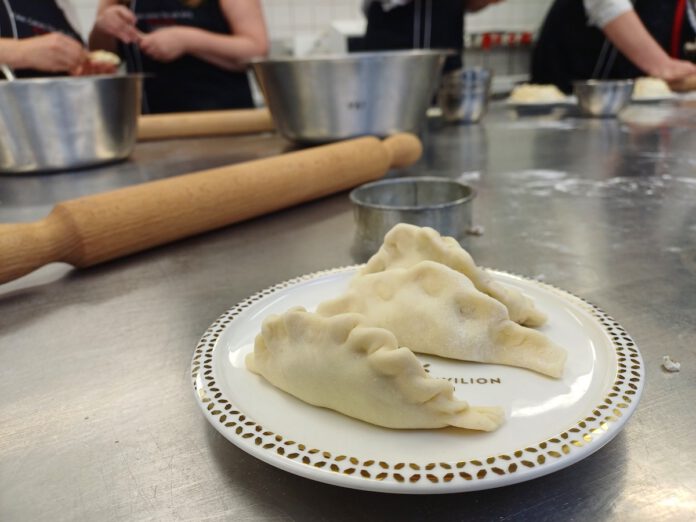On Tuesday, 11 March, Kachen had the privilege of being invited by the Polish Embassy and Polish Tourism Board to explore Polish cuisine at EHTL Diekirch. The day featured a hands-on cooking workshop where we learned to make pierogis with renowned Polish chef Michal Soliwoda.
Gdańsk: Europe’s Food Capital 2025
2025 marks a milestone year for Poland. The country currently holds the EU Council presidency until July. Additionally, the charming Baltic port city of Gdańsk has been crowned Europe’s Gastronomy Capital for 2025-2026. This provided the perfect backdrop for showcasing Poland’s rich culinary heritage at an event bringing together diplomacy and fine cooking at EHTL. Before our culinary adventure began, EHTL Director Michel Lanners highlighted how diplomacy and gastronomy share core values of respect and trust, both serving as powerful tools for breaking down barriers and sparking meaningful dialogue.
Heartfelt cooking: Apples, meat and dumplings
Chef Michal Soliwoda from the luxurious 5-star Aries Lago Park Hotel & Spa in the Masurian Lakes region spoke with genuine passion about what makes Polish cuisine special. “Polish cooking is generous and unpretentious,” he explained. Polish cuisine beautifully blends Slavic, Germanic and Italian influences into something uniquely its own. The hallmarks of Polish cooking include hearty meat dishes, pierogis (stuffed dumplings) and, perhaps surprisingly, apples. Chef Soliwoda proudly noted that Poland exported over a million apples worldwide in 2023, with Germany, Romania and Spain being major destinations.
Traditional savoury Polish specialities include “Bigos”, a robust hunter’s stew of cabbage and meat, “Żurek”, a tangy soup featuring egg and sausage, and “Gołąbki”, which wraps a savoury meat and rice mixture in tender cabbage leaves. For something sweet, apple crumble is a favourite — though the Polish version uses just a light sprinkling of crumble “merely as an accent” to let the gently caramelised, cinnamon-kissed apples take centre stage.



Mastering the art of pierogis
These iconic Polish dumplings are everyday fare rather than special occasion food. “Every household makes them, each with their own little secrets,” the chef revealed. Soliwoda himself makes his dough with flour, water and butter, while most traditional recipes call for oil. Once the dough is prepared and cut into rounds, the filling begins. “The consistency of your filling is crucial — anything too wet makes sealing the dumplings properly a real challenge.” Pierogis can be enjoyed hot or cold — simply boiled or finished in a pan for a golden crisp exterior. A crucial tip: Make sure no filling escapes during folding, or your dumplings might burst open during cooking.
The range of fillings is endless, varying with regional and family traditions. According to Soliwoda, the most beloved filling across Poland combines pork with vegetables. We sampled a delightful version stuffed with potato and fresh dill. Sweet pierogis are equally cherished in Poland, with blueberry-filled versions being particularly popular during the summer months.
A glimpse in pictures of our typical Polish meal





